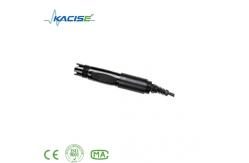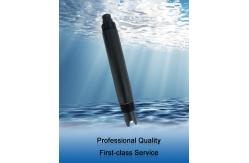Dual High Impedance Online PH Sensor Differential Amplifier KPH601
|
KPH601 Online PH Sensor Signal Output: RS-485 (Modbus/RTU Protocol)1.Temperature compensationTemperature/time behavior of combination electrodes When the temperature change of the medium is rapid, a conventional pH electrode will drift until the temperature of the electrode and the medium become equal. In order for a combination electrode to react rapidly to the temperature changes of the medium, the temperature of the inner lead-off element and the outer reference element must always be identical. Alternatively the temperature dependance of the lead-off elements have to be equal to zero.Optimal electrodes are above all distinguished by the symmetrical warming up or cooling down of their lead-off elements. They have the same temperature coefficient and isothermal Intersection at pH 7 and 0 mV. Thereby a short response time to temperature changes, as well as an accurate temperature compensation can be guaranteed.2.General pH InformationB.1 pH Measurement Theory pH is the negative logarithm of the hydrogen ion activity and a measure of the acidity or alkalinity of a solution. pH = –log A[H+] pH is normally measured using a glass electrode and a reference electrode. The glass electrode acts as a transducer, converting chemical energy (the hydrogen ion activity) into an electrical energy (measured in millivolts). The reaction is balanced and the electrical circuit is completed by the flow of ions from the reference solution to the solution under test. The electrode and reference solution together develop a voltage (emf) whose magnitude depends on the type of reference electrode, the internal construction of the glass electrode, the pH of the solution and the temperature of the solution. This voltage is expressed by the Nernst Equation: E = Eo – (2.3 RT/F) x log A[H+] E = Eo – (slope) x log A[H+] where: E = the emf of the cell Eo = the zero potential (isopotential) of the system. It depends on the internal construction of the glass and reference electrodes. R = gas constant T = temperature in Kelvin A[H+] = activity of the hydrogen ion (assumed to be equivalent to the concentration of hydrogen ions) F = Faraday constant For every unit change in pH (or decade change in ion concentration) the emf of the electrode pair changes by 59.16 mV at 25 °C. This value is known as the Nernstian Slope of the electrode. The pH electrode pair is calibrated using solutions of known and constant hydrogen ion concentration, called buffer solutions. The buffer solutions are used to calibrate both the electrode isopotential and slope. 3.Technical Specifications
4.Dimensional Drawing
Note:The sensor connector is M16-5 core waterproof joint male head. 5.Installation
Note: The sensor should not be installed upside down or horizontally when installed, at least at an angle of 15 degrees or more. Contact UsWebsite www.kacise.com Phone +86-17719566736 Email sales@kacise.com Location Tangyan South Road, High-tech Zone, Xi'an City, Shaanxi Province, China
|
||||||||||||||||||||||||||||||
| Product Tags: Dual High Impedance Online PH Probe Differential Amplifier Online PH Sensor |
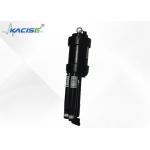
|
KWS-850 On-line Multi-parameter Water Sensor High Accuracy Turbidity Measurement For Wastewater Treatment Plants |
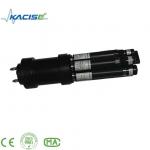
|
Power Consumption 5W 12V KWS-850 Multi-Parameter Water Quality Sensor For Water Monitoring |
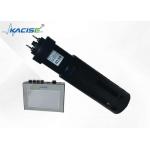
|
Low Maintenance Of The KWS-850 On-line Multi-parameter Water Quality Sensor |
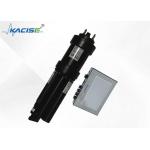
|
Precision KWS-850 On-line Water Turbidity Sensor Water Quality Sensor For Aquaculture |
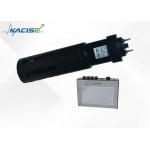
|
The KWS-850 On-line Multi-parameter Water Quality Sensor Can Measure 8 Parameters Simultaneously |
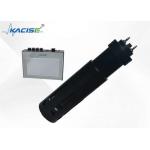
|
The Integrated KWS-850 On-line Multi-parameter Self-cleaning Digital Digital Sensor |

